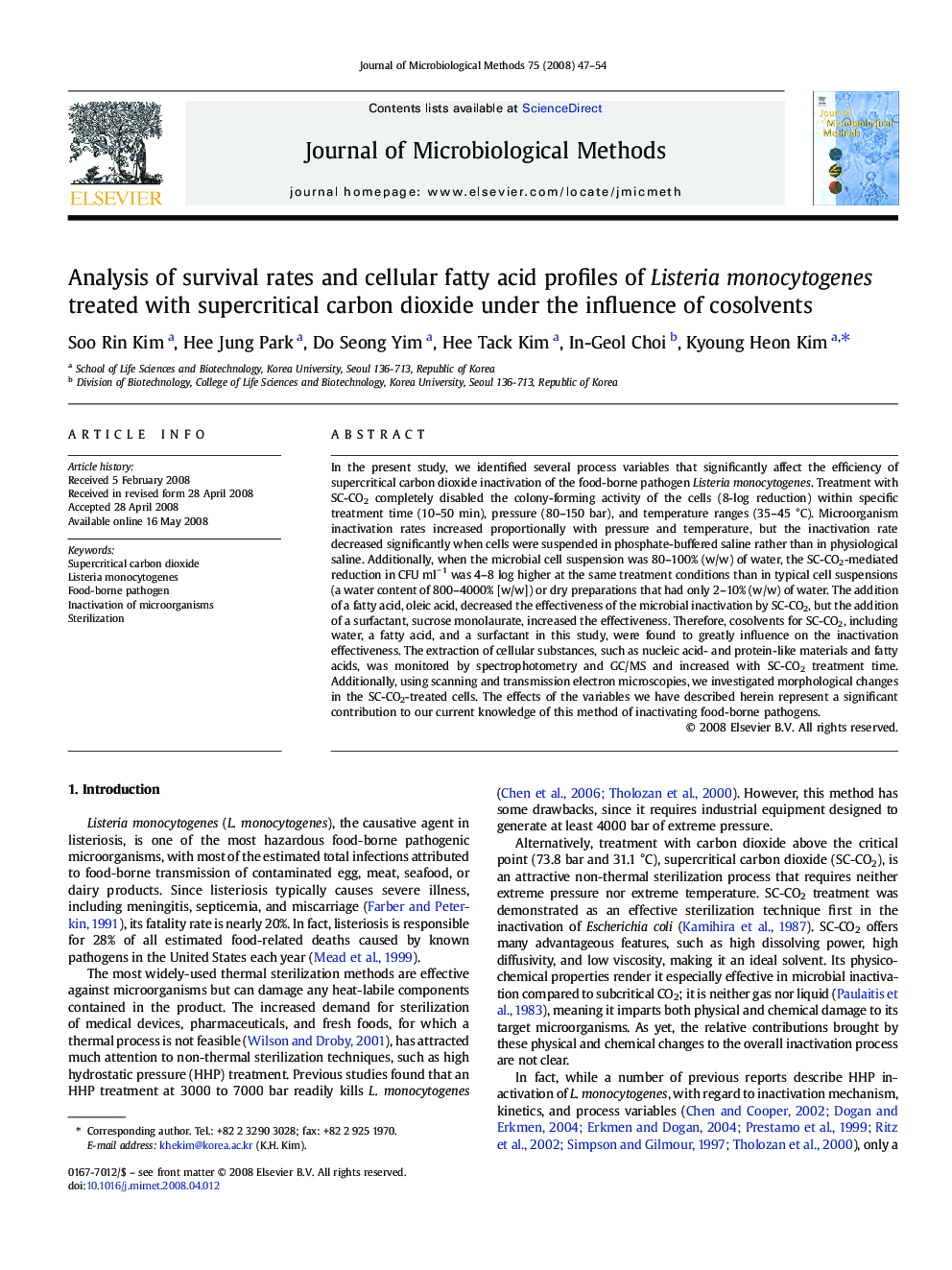| Article ID | Journal | Published Year | Pages | File Type |
|---|---|---|---|---|
| 2091660 | Journal of Microbiological Methods | 2008 | 8 Pages |
In the present study, we identified several process variables that significantly affect the efficiency of supercritical carbon dioxide inactivation of the food-borne pathogen Listeria monocytogenes. Treatment with SC-CO2 completely disabled the colony-forming activity of the cells (8-log reduction) within specific treatment time (10–50 min), pressure (80–150 bar), and temperature ranges (35–45 °C). Microorganism inactivation rates increased proportionally with pressure and temperature, but the inactivation rate decreased significantly when cells were suspended in phosphate-buffered saline rather than in physiological saline. Additionally, when the microbial cell suspension was 80–100% (w/w) of water, the SC-CO2-mediated reduction in CFU ml− 1 was 4–8 log higher at the same treatment conditions than in typical cell suspensions (a water content of 800–4000% [w/w]) or dry preparations that had only 2–10% (w/w) of water. The addition of a fatty acid, oleic acid, decreased the effectiveness of the microbial inactivation by SC-CO2, but the addition of a surfactant, sucrose monolaurate, increased the effectiveness. Therefore, cosolvents for SC-CO2, including water, a fatty acid, and a surfactant in this study, were found to greatly influence on the inactivation effectiveness. The extraction of cellular substances, such as nucleic acid- and protein-like materials and fatty acids, was monitored by spectrophotometry and GC/MS and increased with SC-CO2 treatment time. Additionally, using scanning and transmission electron microscopies, we investigated morphological changes in the SC-CO2-treated cells. The effects of the variables we have described herein represent a significant contribution to our current knowledge of this method of inactivating food-borne pathogens.
